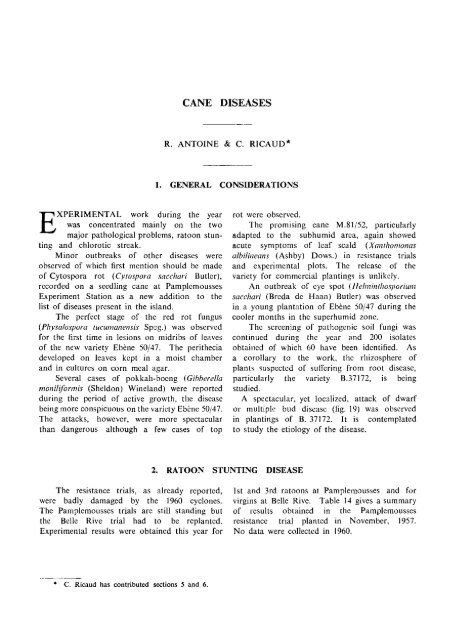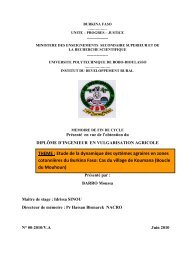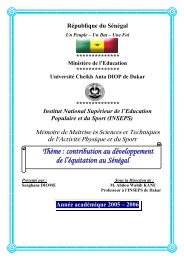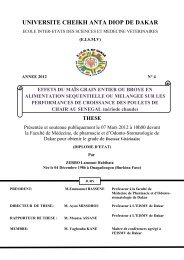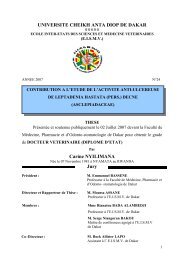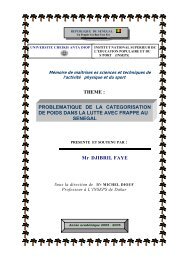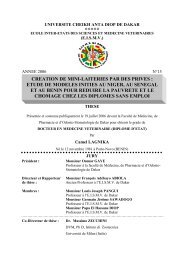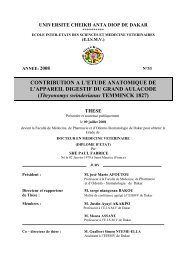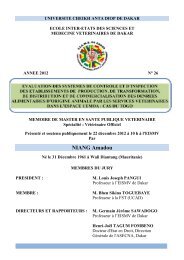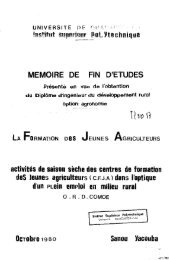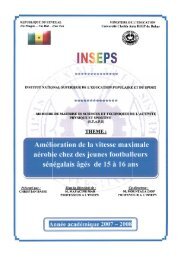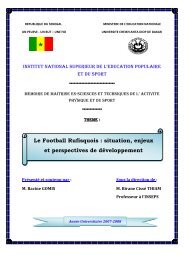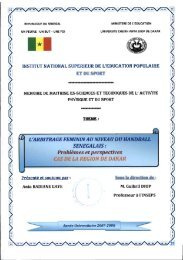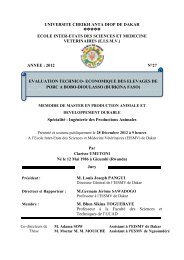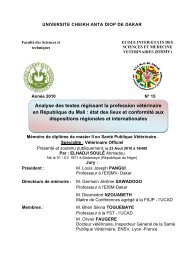Annual Report 1961 - BEEP
Annual Report 1961 - BEEP
Annual Report 1961 - BEEP
- No tags were found...
Create successful ePaper yourself
Turn your PDF publications into a flip-book with our unique Google optimized e-Paper software.
CANEDISEASESR. ANTOlNE & C. RICAUD*1. GENERAL CONSIDERATIONSEXPERIMENTAL work during the yearwas concentrated mainly on the twomajor pathological problems, ratoon stuntingand chlorotic streak.Minor outbreaks of other diseases wereobserved of which first mention should be madeof Cytospora rot (Cytospora sacchari Butler),recorded on a seedling cane at PamplemoussesExperiment Station as a new addition to thelist of diseases present in the island.The perfect stage of the red rot fungusiPhvsalospora tucumanensis Speg.) was observedfor the first time in lesions on midribs of leavesof the new variety Ebene 50/47. The peritheciadeveloped on leaves kept in a moist chamberand in cultures on corn meal agar.Several cases of pokkah-boeng tGlbberellamoniliformis (Sheldon) Wineland) were reportedduring the period of active growth, the diseasebeing more conspicuous on the variety Ebene 50/47.The attacks, however, were more spectacularthan dangerous although a few cases of toprot were observed.The promising cane M.81/52, particularlyadapted to the subhumid area, again showedacute symptoms of leaf scald (Xanthomonasalbilineans (Ash by) Dows.) in resistance trialsand experimental plots. The release of thevariety for cornrnercial plantings is unlikely.An outbreak of eye spot t Helmintliosporiumsacchari (Breda de Haan) Butler) was observedin a young plantation of Ebene 50/47 during thecooler months in the superhumid zone.The screening of pathogenic soil fungi wascontinued during the year and 200 isolatesobtained of which 60 have been identified. Asa corollary to the work, the rhizosphere ofplant, suspected of suffering from root disease,particularly the variety B.37172, is beingstudied.A spectacular, yet localized, attack of dwarfor multiple bud disease (fig. 19) was observedin plantings of B. 37172. It is contemplatedto study the etiology of the disease.2. RATOON STUNTING DISEASEThe resistance trials, as already reported,were badly damaged by the 1960 cyclones.The Parnplemousses trials are still standing butthe Belle Rive trial had to be replanted.Experimental results were obtained this year for1st and 3rd ratoons at Pamplernousses and forvirgins at Belle Rive. Table 14 gives a summaryof results obtained in the Pamplemoussesresistance trial planted in November, 1957.No data were collected in 1960.• C. Ricaud has contributed sections 5 and 6.


